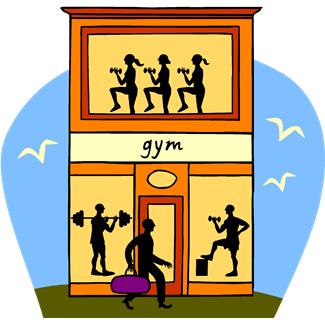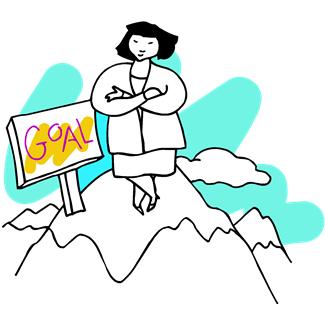Social Influence, Habit Change And What’s Missing!
SOCIAL INFLUENCE, HABIT CHANGE AND WHAT’S MISSING! (ISSUE 98)
By Diane Gold
What is it with social influence and habit change? For habit change, it seems very obvious that people like support. And that more people change a habit using a buddy system or enlisting an accountability partner or group. This article will focus on what about groups helps us and what’s basic to success.
THE MOTIVATION WE GET FROM GROUPS
 When thinking about social influence and habit change, I think of doing physical fitness like tai chi, going to the gym, going to a weight watch group, going to a rehab center. The function of each of these group activities is motivation of some kind. Let’s look at how the group motivates us.
When thinking about social influence and habit change, I think of doing physical fitness like tai chi, going to the gym, going to a weight watch group, going to a rehab center. The function of each of these group activities is motivation of some kind. Let’s look at how the group motivates us.
1) We are social creatures and can enjoy being in the company of others.
2) Because we are the ultimate creatures of habit, a new group setting can be a safer environment than one we have been around when acting out our old habit.
3) We can get courage from hearing that someone else understands us, whether we are talking about drugs, weight loss or anything else.
4) Being with others is a big distraction that can assist us when breaking in a new habit. After all, when we are alone, we are our sole distraction, and the only person on whom we rely; but, in a group setting, we have more social influence keeping us on track.
5) Because we are so impressionable, for the most part, we pick up the habits of others. Therefore, if we are around people who are productive, we will be more inclined to be productive.
AUTHOR’S NOTE
We should note that the group experience is not everyone’s preference. If we look at how Americans spend their time, according to the America Time Use Survey, done by the U.S. Department of Labor, Bureau of Labor Statistics, a similar percentage of people work out alone as together. But this statistic is not specifically for habit change activity, so I would suspect if there were a time use survey done for people who are changing a habit, there would be more groupies than soloists.
SUCCESS RATE
 When we look at the amount of people who go back to their old habits after six months, a year, five years; it can be disheartening. There’s an interesting statistical article from 2004 about how treatment doesn’t work at:
When we look at the amount of people who go back to their old habits after six months, a year, five years; it can be disheartening. There’s an interesting statistical article from 2004 about how treatment doesn’t work at:
http://www.soberforever.net/currenttreatdoesnt.cfm.
Unfortunately, after writing about how treatment doesn’t work, the article’s publisher contradicts itself by saying its treatment facility has a success rate 30% higher than anyone else.
It is fairly accepted that most people who become residents in rehabilitation centers succeed between 3% and 10% of the time to maintain their habit change. The data at centers is usually compiled without scientific method, and, because individuals only answer survey questions to arrive at conclusive data, it is extremely difficult to maintain study integrity.
SIDEBAR
This fact reminds me of another modality whose studies are sporadic, don’t always use scientific method and are small. It’s how tai chi, which saves lives, does its magic. Studies that involve mind-body answers and compare one’s lifestyle before and after are very expensive. To conduct a nice-sized primary study (one that uses fresh data to arrive at conclusions vs. a secondary study that analyzes and interprets a primary study), it can cost $250,000 and that would be for a small mind-body study.
WHAT’S MISSING?
So, what’s missing from all these programs that include one-to-one therapy, group therapy, peer group therapy, tai chi, chi kung, yoga, massage, sauna, meditation, organic vegan food and more?
I’m going to repeat what makes up a habit: a cue, a behavior and the resulting reward. This habit model doesn’t change. So what are we shooting for?
When we go into a program and do all the therapies mentioned above, we have one purpose. It is to change a habit. This requires that a new system be put in place. To build this, we must change the mind and develop skill and build our foundation. After all, we need to have something to hold on to when our urges show up in order to direct us to execute our new behaviors we have developed.
BUILDING FOUNDATION
Let’s use how tai chi changes us since I have seen it first-hand in many hundreds of people. Any mind-body work or other creative discipline can do it as long as the instructor understands how foundation is built and instructs it starting with the basics.
 People think tai chi is for exercise or defense, alone. It’s really for perception change. By doing a powerful exercise as tai chi is, we learn a systematic approach to movement. This system gives us tools to use in everyday life. As we acquire the patience to endure tremendous body exertion, we are learning a tool that works with anything in life. We have the understanding to know that the physical exertion and mental concentration needed to physically execute the movement is teaching us to follow through. And it is showing us we can do it.
People think tai chi is for exercise or defense, alone. It’s really for perception change. By doing a powerful exercise as tai chi is, we learn a systematic approach to movement. This system gives us tools to use in everyday life. As we acquire the patience to endure tremendous body exertion, we are learning a tool that works with anything in life. We have the understanding to know that the physical exertion and mental concentration needed to physically execute the movement is teaching us to follow through. And it is showing us we can do it.
This type of training gives us a foundation of skills that can be used to change a habit. They are self-esteem, pride, temperance, patience, tolerance, strength, balance and many more. These are the traits needed for habit change. If a rehab program misses teaching these skills through some type of system, the program participant is left in relatively the same condition as when s/he arrived, only learning a few rote skills which usually fade away, exposing the old habit.
CONCLUSION
We are socially influenced in many ways. When we see lots of people doing the same thing, we are more inclined to do that same thing. I always give the example of helping a fallen woman on the sidewalk. If no one has stopped to help, we are less likely to stop. If someone has already stopped to help, we will be more likely to inquire if we can help (unless we are public servants or feel like public servants and believe it is our duty to protect).
 It’s the same if we surround ourselves with people who do not take drugs or drink or overeat or gamble. We will be more likely to accept behaving in a similar fashion, especially if they know we are working on habit change. If we keep repeating a new behavior in place of the old habit at the same time as building a personal foundation, we will succeed. And what’s missing at the start will no longer be missing. We will have developed, not only new behaviors, but a structure within ourselves that will sustain the way we wish to live.
It’s the same if we surround ourselves with people who do not take drugs or drink or overeat or gamble. We will be more likely to accept behaving in a similar fashion, especially if they know we are working on habit change. If we keep repeating a new behavior in place of the old habit at the same time as building a personal foundation, we will succeed. And what’s missing at the start will no longer be missing. We will have developed, not only new behaviors, but a structure within ourselves that will sustain the way we wish to live.
ACTION STEP SEQUENCE
In order to see how easy it is to reach out to another, meaning, to form a group, here’s an action that might be helpful.
1) Approach someone who is in your life or just someone you meet at the library or supermarket.
2) Tell her (him) you are doing an experiment and that you need help one time between 6 pm and 7 pm one night this week. (It can be a different time.)
3) Tell the person that, when you call, you will ask her to tell you how important you are to your mission.
_________
Let us know how it goes.
_______________________________________________________________
_______________________________________________________________
FEEDBACK
Please leave a comment and LIKE.
DIANE GOLD, AUTHOR
Diane Gold, Founder of Warriors of Weight, Turning Habits Into Health, is a mentor in tai chi, kung fu and meditation, a music, fitness and stress expert, dedicated mom, studying plant-based nutrition and habit change.
She has been influenced by group dynamics and seen how others sometimes get trapped. She says,
“Fortunately, I was raised to be very independent. But groups still influence me. Whether we are helped by the group or our own personal way, the one that works is the right one for each of us.
“As for building a foundation, there’s only one way to go about it: one step at a time. Slowly, with consistency and follow-through. As we begin to build upon ourselves, we become very strong. Then we become the social influencers, and nothing more is missing.”







